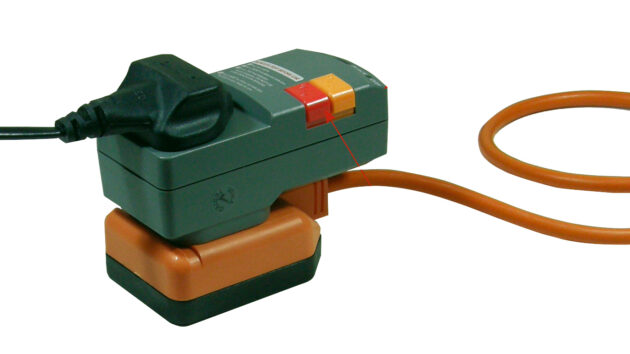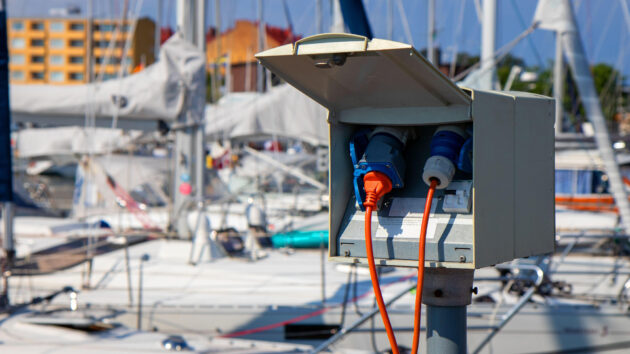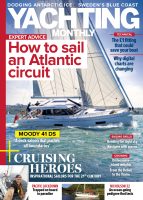A shoreside AC supply is convenient but potentially lethal, advises Andrew Simpson
While relatively few boats use AC at sea, the majority of us take advantage of it when alongside. The benefits are many, although not without risks to your health and your boat.
The story starts with the local electricity firm supplying 3-phase AC power (typically 415V) to the marina. This is divided into 240V single-phase and distributed to the various pontoons where 3-pin electrical sockets, mounted on pedestals and often metered, are spaced so as to be accessible to neighbouring boats. The sockets are normally rated at 15A – enough for most purposes but not very heavy loads such as household type stoves that can draw up to 40A.
Electrical conductors
The three conductors that carry the power to the socket are ‘live’, ‘neutral’ and ‘earth’. The neutral and earth are linked together ashore (but never on the boat!) and ‘earthed’
(or ‘grounded’) to a pin or plate buried underground. This is to maintain the neutral at ‘earth potential’ – i.e. zero volts.
The purpose of the earth wire is to provide an escape path for any ‘fault’ currents to be conducted safely from the boat.

Always use an RCD (residual current device)
Residual current devices
When using an extension cord, a useful
safety precaution is to fit a portable RCD (residual current device). It relies on a simple principle. In a closed circuit the current remains constant throughout its length. If it doesn’t there must be some electrical leakage somewhere. In an RCD unit the live and neutral conductors pass through a toroidal (ring) transformer which senses their magnetic fields.
If all is well these fields cancel each other out. But if a leakage causes an imbalance, the RCD spots the difference and trips the circuit to make it safe.
RCDs are rated at the current differential at which they will operate (30mA being typical for human protection) and the trip speed (30–100msecs of ‘break time’). They are sometimes combined with overload protection circuit breakers whereupon they become known as RCBOs – a mercifully abbreviated acronym for Residual Current Breaker for Overcurrent Protection.
Shocking story
A young man was preparing a Mediterranean yacht for charter. To power the vacuum cleaner and polishers, an electrical cable had been strung from ashore. However, its insulation had worn through where it crossed the aluminium toerail. While polishing the pushpit he steadied himself by grabbing the stainless steel steering wheel.
This was all the current was waiting for – a path to earth, through the steering linkage and down the rudder stock. The shock travelled from arm to arm, across his chest – the most lethal course. Thankfully he survived, but only after resuscitation and several days in a coma.
Enjoyed reading this?
A subscription to Yachting Monthly magazine costs around 40% less than the cover price, so you can save money compared to buying single issues.
Print and digital editions are available through Magazines Direct – where you can also find the latest deals.
YM is packed with information to help you get the most from your time on the water.
-
-
- Take your seamanship to the next level with tips, advice and skills from our experts
- Impartial in-depth reviews of the latest yachts and equipment
- Cruising guides to help you reach those dream destinations
-
Follow us on Facebook, Twitter and Instagram.
Note: We may earn a commission when you buy through links on our site, at no extra cost to you. This doesn’t affect our editorial independence.





